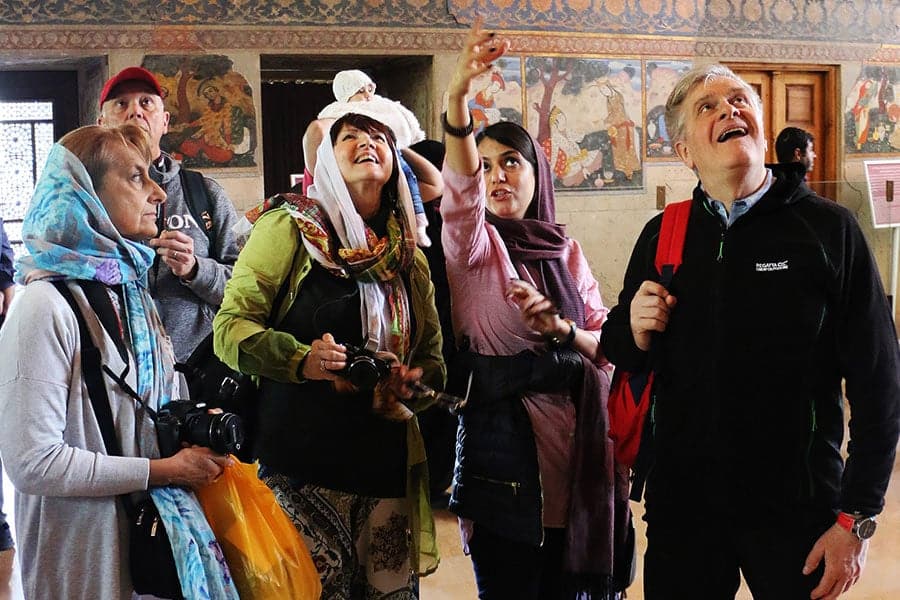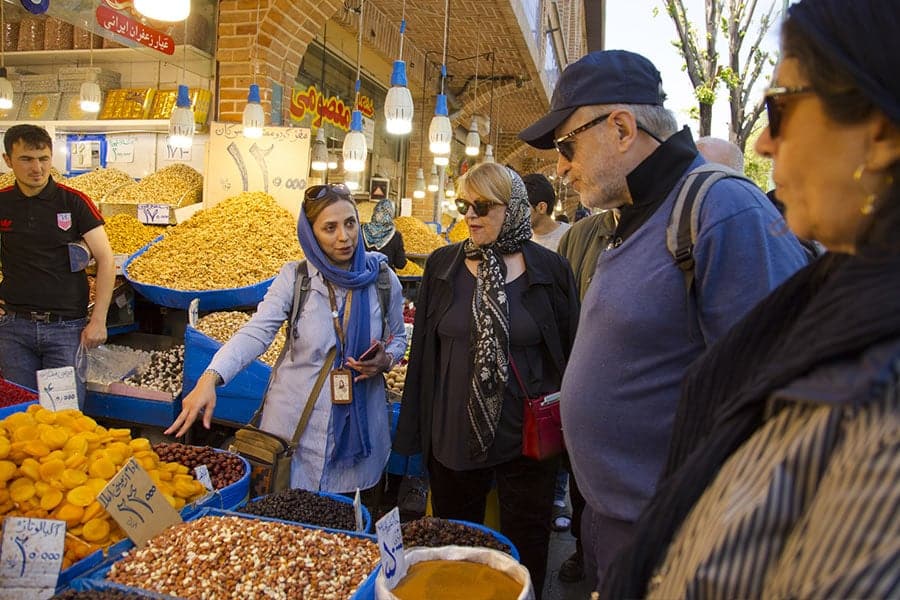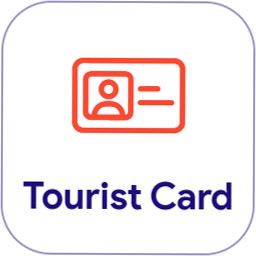Tajrish Bazaar: Explore the Best of Tehran’s Traditional Market
Discover the Charms of Tehran's Tajrish Bazaar: Amenities and Attractions

Tehran’s Tajrish Bazaar stands as one of the city’s most ancient and traditional markets, now a pivotal tourist hub in Tehran. Located in the northern district of Shemiranat, this market beckons every tourist and traveler to Tehran, promising an unforgettable experience steeped in history. Join us at SURFIRAN as we explore the wonders of Tehran’s Tajrish Bazaar.
Contents
A Pictorial History of Tehran at Tajrish Bazaar
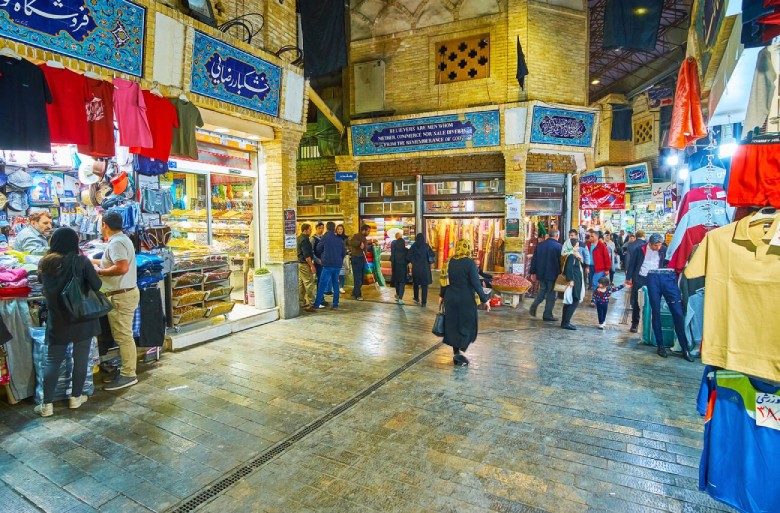
Tajrish Bazaar is among Tehran’s oldest markets, renowned for its covered space and straightforward layout, features that distinguish this traditional market. Both domestic and international tourists flock here, drawn by the allure of an authentic Iranian atmosphere.
Situated in North Tehran, in the Tajrish neighborhood and Shemiranat area, it directly accesses Tajrish Square and the Tehran metro station (Tajrish station). This traditional market essentially connects the old neighborhoods of Sarband and Tajrish and leads to the entrance of Imamzadeh Saleh on one side and the historically significant Takyeh of the market on the other.
A Takyeh is a building where Shia Muslims gather to mourn Husayn’s death during Muharram. These structures are common across Iran, with Tehran hosting up to 50 takyehs under the Qajar dynasty.
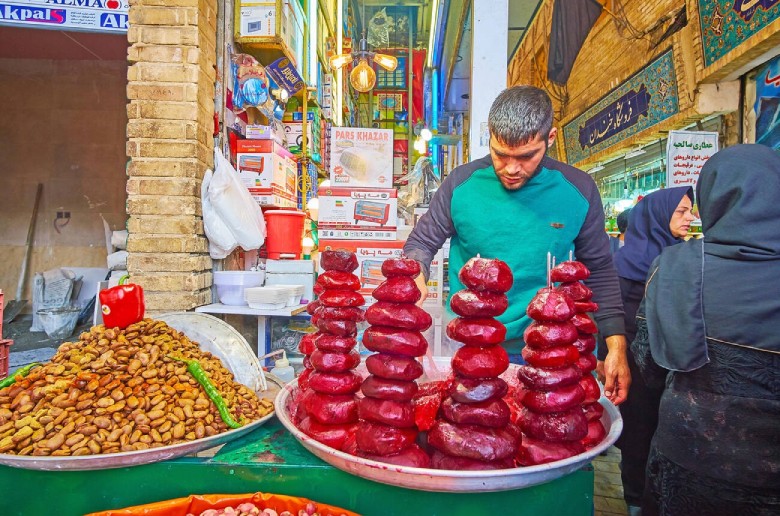
Tajrish Bazaar accommodates nearly 400 shops, each sign written in traditional Persian Nastaliq script on turquoise tiles above the storefronts. As evening approaches or during holidays, especially before the New Year, the bazaar becomes increasingly lively and crowded. In the days leading up to Nowruz, the area around the square and market teems with people shopping for the new year, alongside performers announcing the arrival of the new year among the crowds.
Vendors offer everything needed for the Haft-Sin table, including fish, various sprouts, colored eggs, and more. The Tajrish Bazaar in Tehran serves not only as a commercial locale but also as a significant cultural and social center, positioned alongside mosques, Imamzadeh, takyeh, and the city hall. It stands as one of Tehran’s must-see sights, especially after its restoration, enhancing its beauty and making it a smaller counterpart to the Grand Bazaar of Tehran.
If you’ve visited this market, you’ll notice that beyond the hustle and bustle of its corridors, at the end of the market lies a large platform surrounding the fruit and vegetable section. This part, the oldest section of the market and takyeh, dates back to the Qajar era, originally built for Muharram mourning ceremonies.
History of Tajrish Bazaar
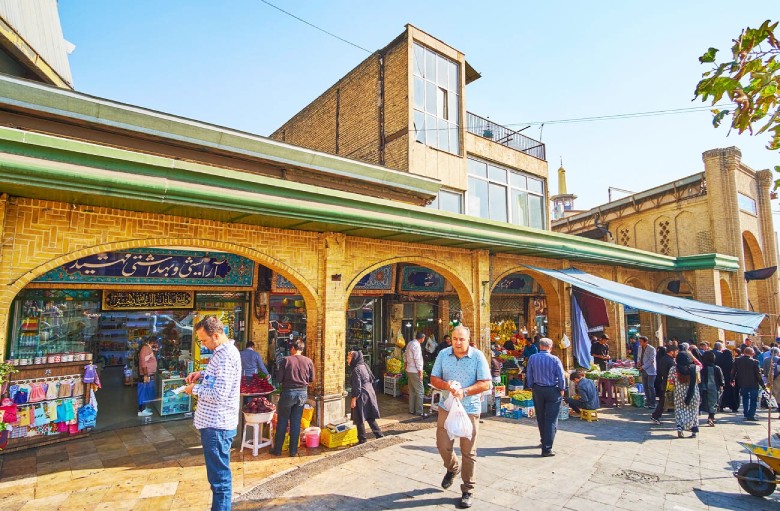
Wondering how old Tajrish Bazaar in Tehran might be? When you encounter walls adorned with ancient patterns and tiles as you navigate parts of Tajrish Bazaar, it might feel like stepping into a museum rather than a market with a traditional facade. You might guess that this market has a long history.
Indeed, the bazaar has been thriving for more than 100 years, a century filled with the hard work of its vendors.
In times past, before the area was surrounded by homes and buildings, Tajrish was known for the holy site of Imamzadeh Saleh, a covered traditional market, and the Tajrish river, with lush fruit gardens as far as the eye could see.
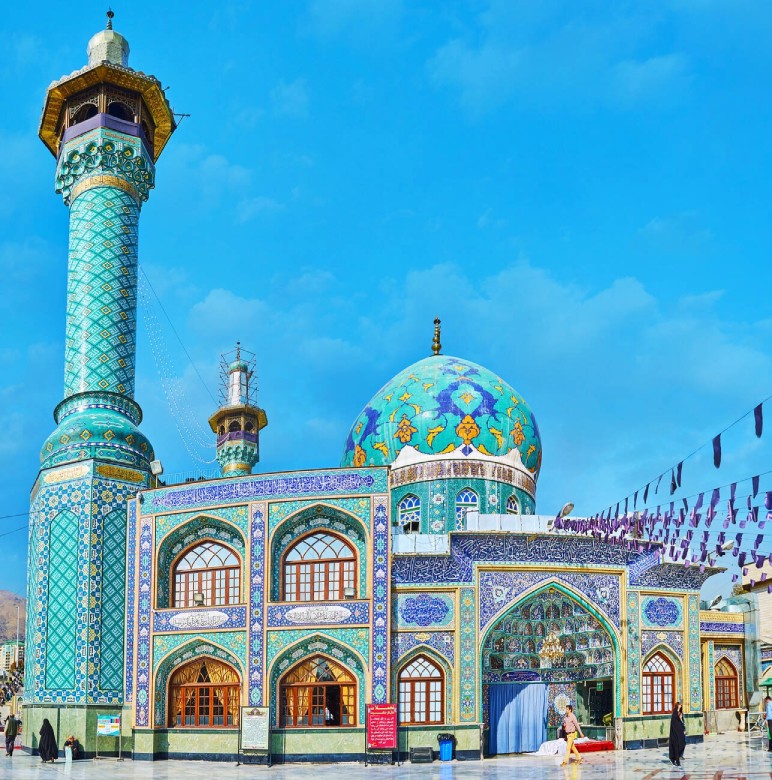
Although the construction of modern complexes like Qaem Passage has somewhat disrupted the historical fabric of Tajrish Bazaar, efforts continue to restore and maintain its traditional atmosphere.
The exact age of the bazaar is subject to speculation, but sources indicate it was built around 70 years ago. Some of the market’s older vendors believe its origins could date back 150 years, with certain structures within the bazaar suggesting it might even be 200 years old. The large Takyeh of Tajrish, believed to be over 220 years old, predates the market itself.
Strolling Through the Stalls and Shops
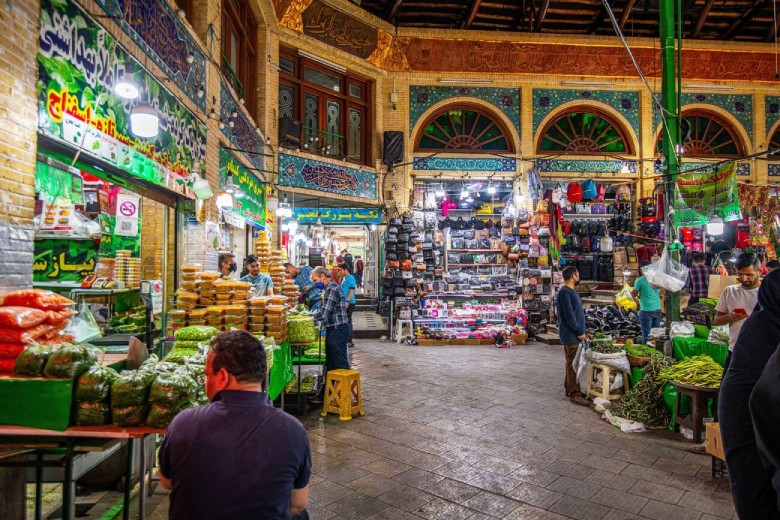
Walking through the aisles of Tajrish Bazaar in Tehran, you’ll notice the orderly arrangement of stalls and shops, organized based on a specific layout regarding the types of goods sold and shop sizes. At the beginning of the market, near Tajrish street and metro station, you’ll find juice and ice cream vendors, offering easy access and less congestion. As you move further inside, you’ll encounter shops selling dried fruits, snacks, and as you reach the end, a variety of food items, clothing, shoes, toys, and even household goods.
Clothing
Tajrish Bazaar boasts a wide range of clothing stalls for women, men, and children, offering a variety of styles, scarves, and traditional wear. Many clothing vendors in Tajrish are wholesalers, making their prices quite reasonable.
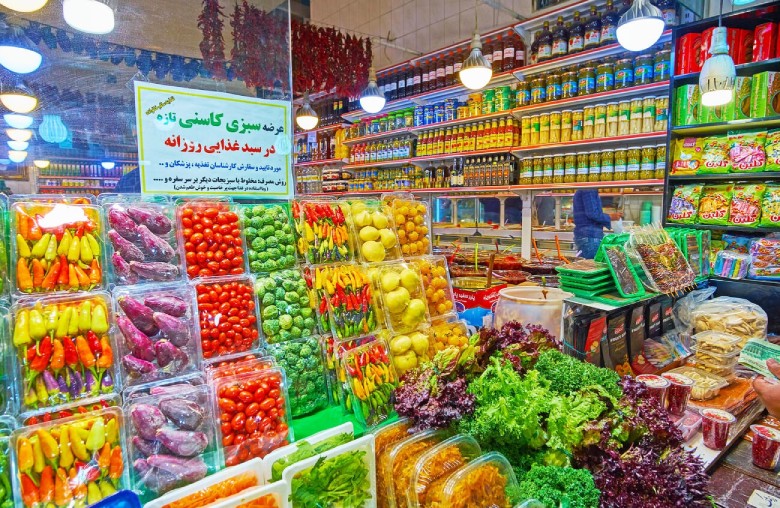
Home Goods
Part of the market is dedicated to home goods stores, selling kitchenware, copper pots, glass, and porcelain items.
Fruits
In addition to fruit vendors around the market, the Takyeh area of Tajrish Bazaar is specially reserved for a fruit and vegetable market, providing a local shopping experience for all kinds of fresh produce.
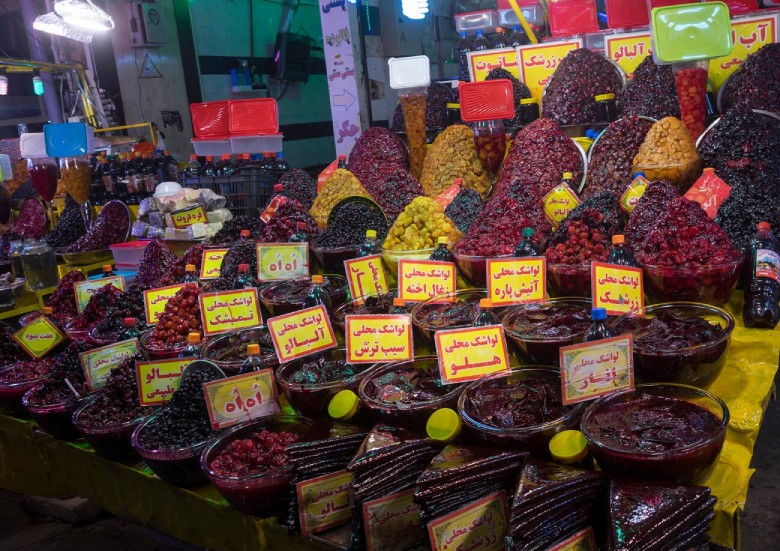
Spices and Pickles
One of the market’s most fascinating sections is the aisle of pickle and spice shops, dried fruits, and traditional snacks. Just walking through this area envelops you in the aromas of various pickles, spices, and snacks, tempting you to leave the market with at least one item, even if you hadn’t planned on buying anything.
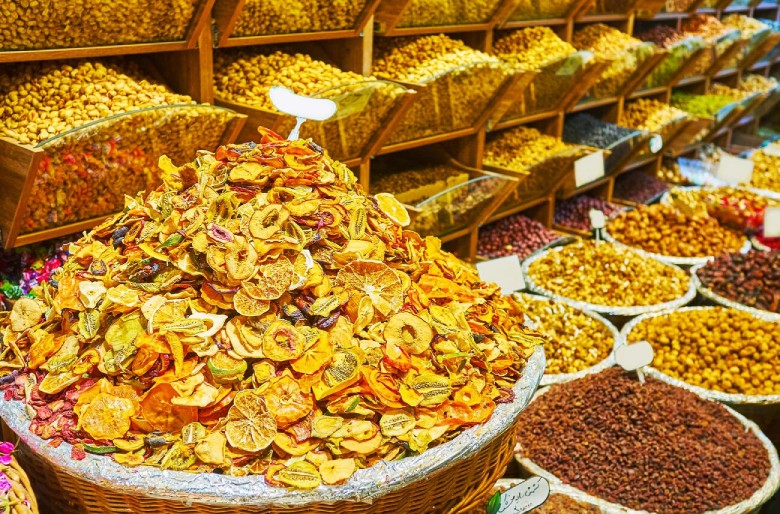
Handicrafts
The highlight of Tajrish Bazaar is its array of handicraft shops, from jewelry and rosaries to different types of traditional rugs and crafts, making your market stroll even more enjoyable.
Tajrish Bazaar Restaurants
Depending on your taste, Tajrish Bazaar offers a variety of restaurants, whether you’re in the mood for kebabs, Iranian cuisine, or fast food.
As noon approaches, the aroma of delicious foods fills the market, with vendors often opting to eat lunch from the bazaar’s long-standing restaurants.
The Historic Takyeh of Tajrish Bazaar
One of Tehran’s oldest Takyehs is located within Tajrish Bazaar. Although it now primarily serves as a fruit and vegetable market, during Muharram, it still becomes a center for mourning ceremonies and performances.
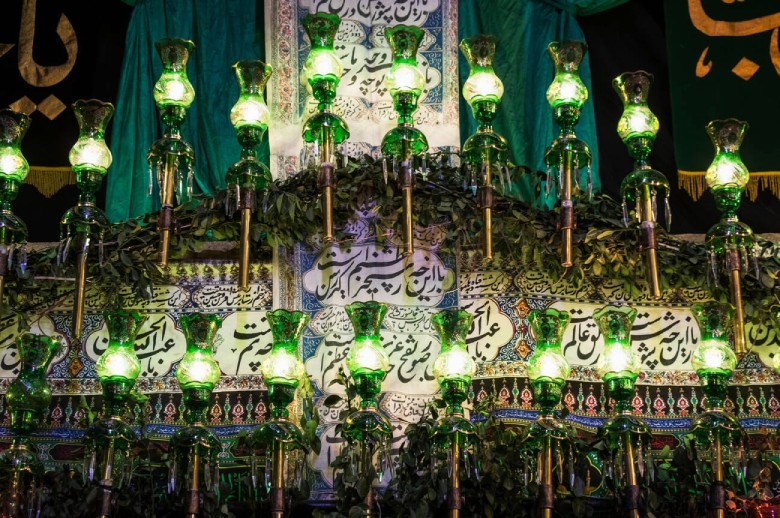
Mosques of Tajrish Bazaar
An interesting aspect of the bazaar is its incorporation of several of Tehran’s old mosques. Traditionally, mosques and schools were built next to markets, and Tajrish Bazaar is no exception, housing three mosques within its old fabric: Saheb Al Zaman (Khan Mosque), Aazam Mosque, and Seyed al-Shohada Mosque.
The Best Time to Visit Tajrish Bazaar
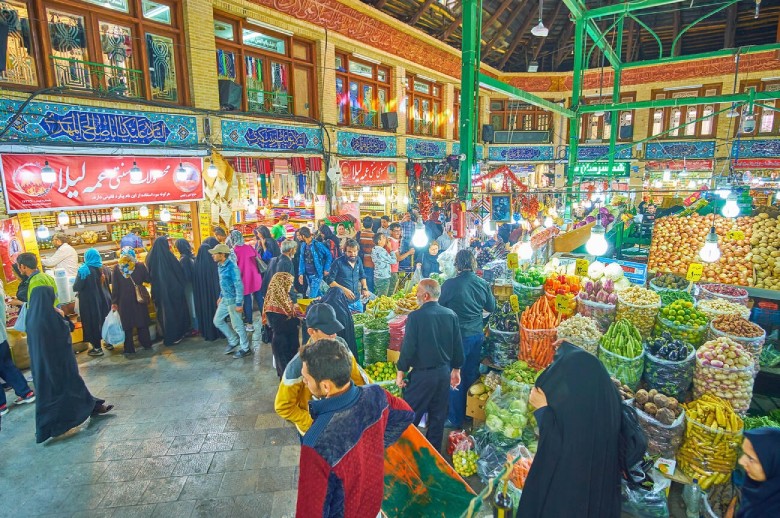
Depending on your purpose for visiting the vibrant Tajrish Bazaar in Tehran—whether it’s shopping or exploring the market’s culinary delights—the best time to visit can vary significantly.
For those aiming to shop, the ideal time might be during the quieter hours, such as mid-week days when there are no special occasions or holidays. However, for a taste of traditional Iranian cuisine and a stroll through the market’s food attractions, the evening is when Tajrish Bazaar truly comes to life, with all shops open and the area beautifully lit, offering a picturesque setting.
Book Services, Pay Online
Tajrish Bazaar Operating Hours
Tajrish Bazaar is open almost daily from 9 AM to 10 PM, typically busier at night. Even on Fridays, the traditional market remains open, though expect it to be more crowded on holidays and weekends.
Accessing Tajrish Bazaar
Beyond its main entrance, Tajrish Bazaar is accessible through surrounding passageways like the Qaem Tajrish Passage, providing both external and internal access.
Transportation Options to Tajrish Bazaar
- Metro: The red line’s terminal station at Tajrish connects directly to Tajrish Square, making it a convenient option.
- BRT Bus: The terminal station of the Railway-Tajrish Line 7 BRT is at the end of Quds Square, close to Tajrish Square—a mere 5-minute walk away. This offers an affordable and accessible route to the bazaar.
- Bus: The Resalat-Quds line also stops at Quds Square, at the end of Shariati Street near Tajrish Square, providing another convenient access point from the east of Tehran.
- Taxi: Taxis from all major points in Tehran head towards Quds Square or Tajrish Square, offering a quick way to reach the bazaar.
- Personal Vehicle: Driving from areas like Valiasr Street, Zafaraniyeh, or Niavaran towards Tajrish Square, or from Shariati Street to Quds Square and then towards Tajrish Square, are options. Due to the area’s popularity, several public parking lots near Tajrish Bazaar and its square have been established, though finding a parking spot can be challenging.
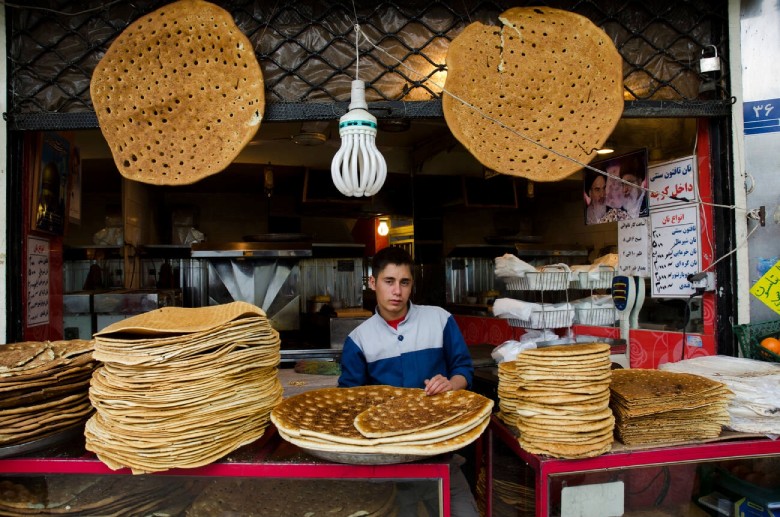
Tajrish Bazaar: Final Words
With its rich history, wide range of attractions, and easy accessibility, Tajrish Bazaar annually, or even daily, becomes a prime destination for Tehran residents and visitors alike. No one traveling to Tehran, whether from within Iran or abroad, should miss the opportunity to experience the lively, fragrant, and bustling atmosphere of this market. Its blend of traditional and modern elements in recent years offers a refreshing glimpse of a different side of Tehran.
Despite the city’s reputation for congestion and pollution, the vibrant streets leading to Tajrish Square instill a sense of joy and vitality among the city’s residents, showcasing the lively spirit that defines Tehran.
Read More
